A Zeiss masterpiece.
The German Bauhaus architecture movement ran through the 1950s and had a singular focus on function over form. You can get a sense of it from the Bauhaus building in Dessau, though why architect Walter Gropius felt compelled to add the name of the movement to the building remains a mystery (and the ‘S’ is too small!):
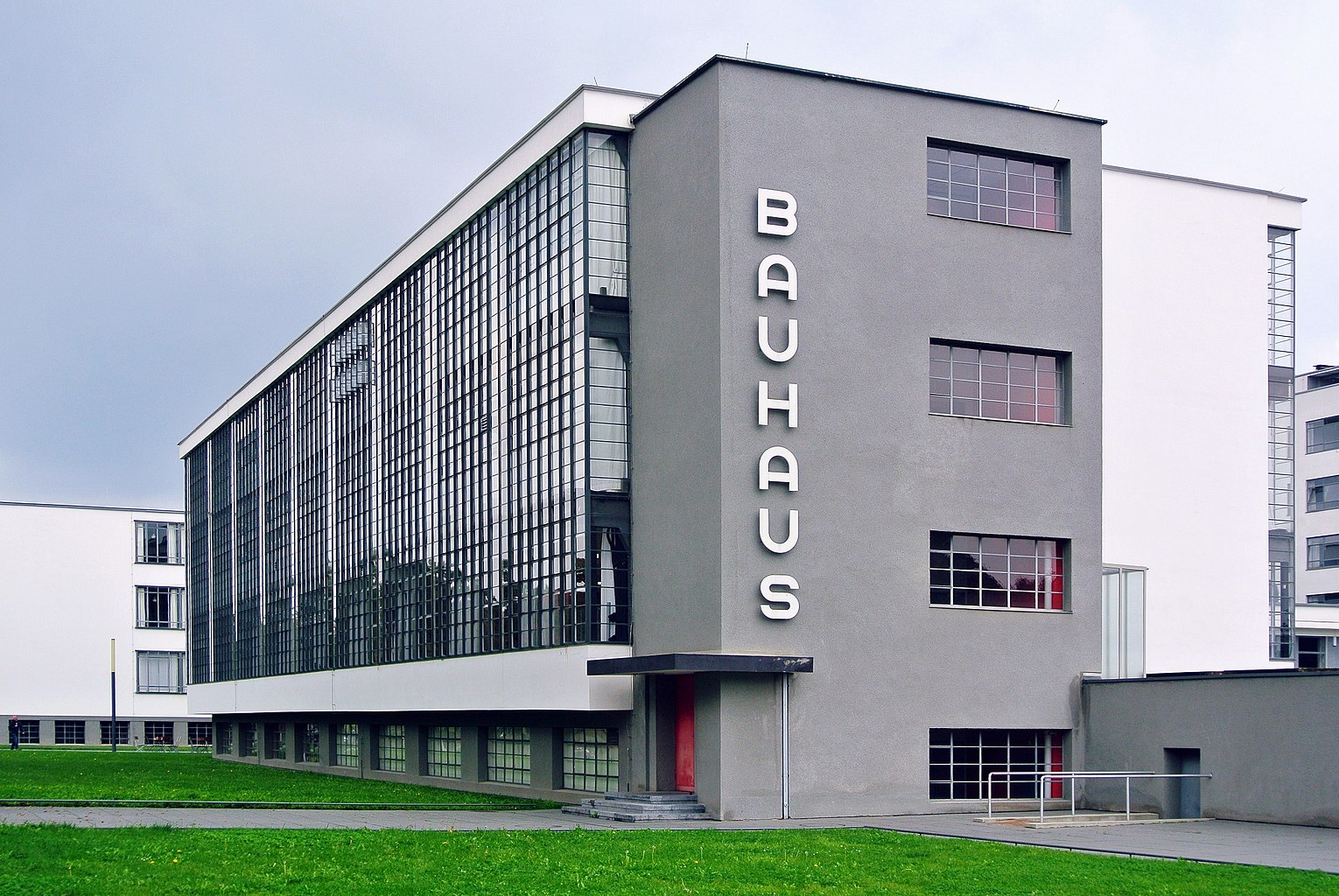
The Bauhaus building in Dessau.
The windows are large, the design is largely one of right angles and the mass production aspect of the parts is self evident.
What has this to do with the Zeiss Ikon Contax IIa which was manufactured between 1950-60? Well, this supremely elegant camera first saw the light of day as the pre-war Contax II about which I wrote a decade ago. The Bauhaus influence on the design is writ large.
The Contax II was introduced in 1936 and bombed out of existence by the Allies in the second world war. The IIa was an improved model with aluminum replacing the fragile brass slats of the roller blind vertically traveling focal plane shutter. Further, the film counter was integrated into the advance knob rather than having a separate top plate window. The rangefinder base length was shortened slightly and the overall quality went up.
And when you pick up a IIa the overwhelming impression is one of mass – it’s heavy for its small size – and quality of construction and finish. Everything is tight, the engraving and knurling are to die for and it feels right in the hand. And the clean lines clearly show the Bauhaus influence on the original design, carried on after the war.
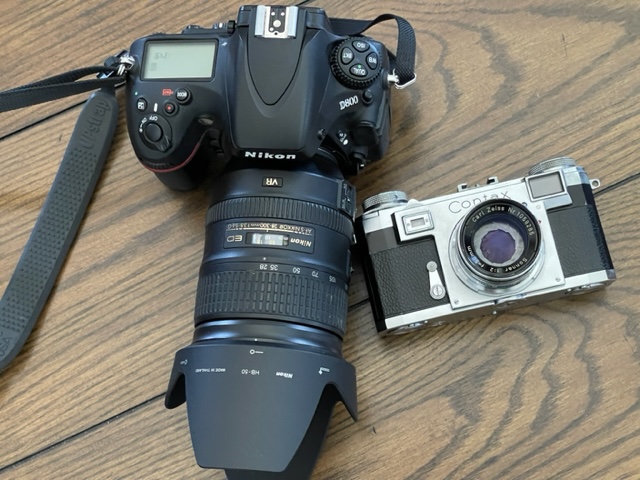
Modern gargantuanism dwarfs the petite Contax IIa
It may lack electronic gizmos, but the size is just so.
The detachable 50mm f/2 Sonnar is tiny. The focus helicoid is attached to the body, not the lens.
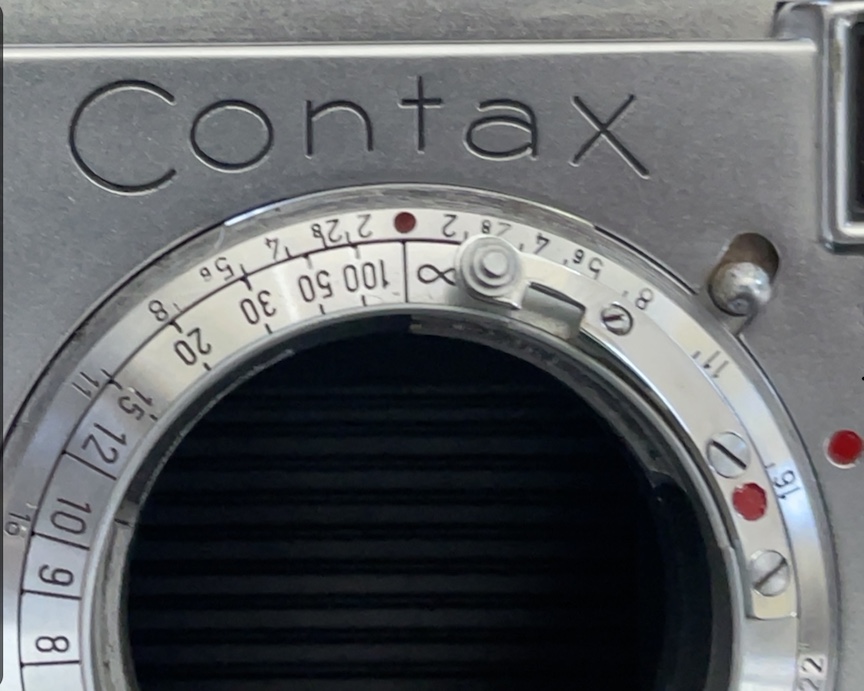
Note the subtle changes in font sizes.
The dual bayonet mounts accommodate short and long lenses.
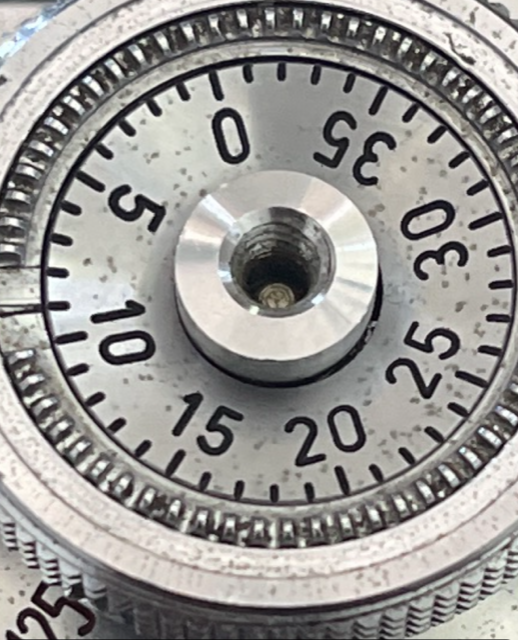
Engraving and knurling quality to die for.
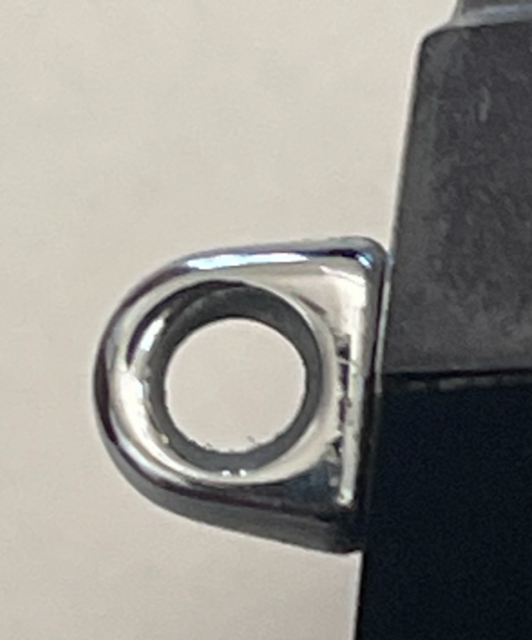
Near mint strap lugs testify that this is not a ‘beater’.
Why buy a 75 year old rangefinder camera with no automation, no digital sensor and using film? Because it is an object of engineering beauty and joins other of its ilk on display in the home theater. In addition to many classic movie posters, that room displays a Bolex H16 16mm film camera, an ancient Weston Master selenium cell meter, a period Bell & Howell 16mm film projector, a Goldberg 35mm film reel and an antique candlestick phone. The Contax, like all of those, is in perfect working order.
On display in the home theater.
Nothing less than a Leitz tabletop tripod and ball head would suffice.